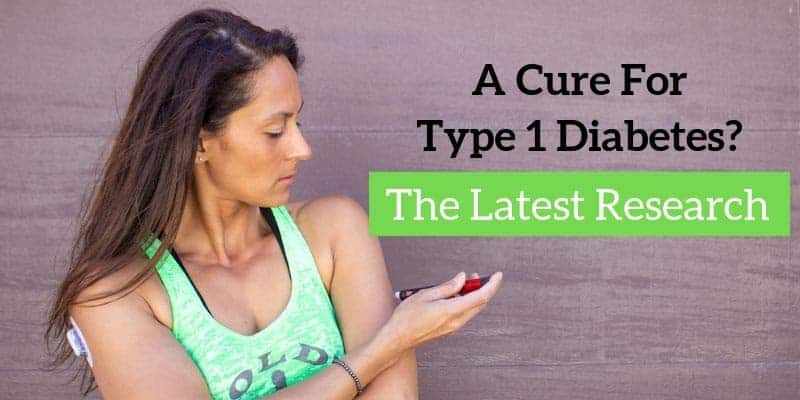Relating to discovering a treatment for sort 1 diabetes, it’s really been achieved dozens of instances — in mice. Curing sort 1 diabetes within the extra complicated system of a human being is a distinct problem.
Lots of the enthusiastic studies you may see in your newsfeed every year are largely profitable “cures” in mice which have but to be trialed on people. Most, sadly, fail in human trials.
On this article, we’ll have a look at the highest contenders within the analysis to discover a treatment for sort 1 diabetes, the medical trials course of any potential treatment should undergo, and the newest treatment analysis that’s working in mice.
What would a diabetes treatment want to perform?
Whereas we frequently joke about needing a “new pancreas” as individuals with sort 1 diabetes, what’s actually failing inside our physique is our immune system.
In individuals with sort 1 diabetes, your immune system is continually attacking the beta cells produced by your pancreas which might be important for producing insulin. Whereas your analysis might have been years or a long time in the past, your physique nonetheless tries each single day to provide insulin.
Sadly, your immune system remains to be attacking and destroying these cells each single day, too.
For a remedy methodology to totally treatment an individual with sort 1 diabetes, it might have to do at the very least one of many following:
- Inform our immune system to cease attacking these beta cells
- Present another supply of beta cells which might be protected against the immune system
Simpler mentioned than carried out. Let’s check out the highest (and maybe solely) contender for curing sort 1 diabetes in right now’s present analysis.
The principle contender for a kind 1 diabetes treatment
Whereas you might even see a wide range of information articles every year with researchers claiming they’ve discovered a profitable treatment for sort 1 diabetes, the bulk fail in animal trials and are by no means heard from once more as a result of they don’t move the early levels of long-term efficacy and security.
“Nearly all of it’s actually lined with hope,” explains Kristina Wolfe Morgan, MSPH, who’s an skilled in sort 1 diabetes medical analysis and public well being, and a passionate affected person advocate.
Like most of us, Figueroa says that after her personal sort 1 diabetes analysis at age 6 in 1996, her healthcare crew instructed her a treatment was simply across the nook. Because of the half dozen cures of sort 1 diabetes in mice every year, it may possibly appear that method.
“We’ve made enormous advances,” provides Figueroa, “however we’re nonetheless nowhere shut.”
The researched remedy efforts closest to a profitable treatment come down to at least one, perhaps two, which have the potential to progress by every crucial trial part.
And hopefully, sooner or later it can grow to be obtainable to all sufferers with sort 1 diabetes.
ViaCyte’s Encaptra cell supply system
Indisputably, ViaCyte’s implantable capsule system is closest to paving the best way to a profitable treatment.
The way it works
First developed by docs, ViaCyte’s expertise was examined on over 1000 rodents with medically induced sort 1 diabetes.
It at the moment has two medical trials in progress with two completely different units: the Encaptra capsule system which accommodates pancreatic beta cell precursors (also called VC-01 or PEC-Encap), and the PEC-Direct works very equally however is for a extra weak portion of the diabetes inhabitants.
ViaCyte started working with the College of California, San Diego (UCSD) as its first medical web site.
Replace: ViaCyte was acquired by Vertex in 2022, with the objective of accelerating its applications in sort 1 diabetes
The PEC-Encap
The PEC-Encap is a completely encapsulated product, and as such, doesn’t require immunosuppression.
As soon as implanted inside the pores and skin, the precursor cells then mature into totally functioning endocrine cells that produce insulin and different hormones like amylin that play a crucial position in stabilizing blood sugar ranges.
Nevertheless, the crucial element that makes or breaks ViaCyte’s success is the physique’s capability to “vascularize” the product.
“Vascularizing implies that blood is flowing by it, permitting the pancreatic progenitor cells to mature into insulin-producing islet cells,” explains Figueroa.
Figueroa provides that the process itself is pretty easy, although outpatient, and a brief restoration interval.
“After which, it takes a number of months for the product to get vascularized in your system, mature into islet cells, and begin producing helpful insulin.”
As a result of the capsule isn’t linked in any approach to the prevailing pancreas, and it’s secure from the affected person’s self-destructive immune system, the beta cells can thrive and produce insulin to efficiently handle blood sugar ranges.
Nevertheless, do take into account, it’s anticipated that sufferers would wish to endure the process maybe yearly in an effort to implant extra progenitor cells; that is what ViaCyte is testing within the preliminary cohort of the continued Section I/II Scientific trial with the smaller, sentinel models.
“On the 2018 ADA, ViaCyte reported two-year histology of VC-01 explants confirmed areas containing insulin-producing beta cells and glucagon-producing alpha cells, indicating that when vascularization happens, cells can persist with out the necessity for immunosuppression,” explains Figueroa.
The long-term objective, she provides, is to make the common addition of recent cells a easy non-invasive process. And ideally, finally no want for extra cells in any respect.
The PEC-Direct
This type of the capsule expertise works very equally to the PEC-Encap nevertheless it has a number of key variations.
PEC-Direct supplies direct vascularization of the graft cells and thus does require persistent immunosuppression; as a consequence, the goal inhabitants is the high-risk sort 1 diabetes affected person — extra particularly, these sufferers with hypoglycemia unawareness or these with excessive “glycemic lability,” typically known as the “brittle diabetic.”
How lengthy till ViaCyte’s treatment remedy is extensively obtainable?
“It’s essential to do not forget that, although they’re making unbelievable progress, they nonetheless have an extended approach to go,” says Figueroa.
Figueroa factors out that merely attending to part 1 of medical trials took ViaCyte greater than 10 years. However they’re making progress.
There are at the moment two medical trials in progress: the primary is with the PEC-Encap expertise. The second is with PEC-Direct. Let’s take a better have a look at the phases they need to obtain over the subsequent decade:
Section I: Security & Tolerability
Cohort 1 of this Section I/II research was fully targeted on the capsule’s capability to grow to be vascularized inside the human physique. This part didn’t have a look at whether or not it managed blood sugars, however merely that the physique was in a position to settle for and make use of the capsule by flowing blood by it and choosing up the insulin being produced by the cells within the capsule.
“It has to get into the affected person’s bloodstream earlier than it’ll begin working and producing insulin,” reminds Figueroa.
ViaCyte completed this part in 2018 with a small trial of 4 sufferers.
Section II: Efficacy & Facet-Results
As ViaCyte begins Cohort 2 of the Section I/II research, issues get thrilling as a result of that is the place they decide if the vascularized capsule will successfully produce insulin and handle a affected person’s blood sugar ranges.
In reality, they’re nonetheless recruiting sufferers for a number of places of human trials for the PEC-Direct. Listed here are the places:
- San Diego, California
College of California San Diego
Research Coordinator: 844-317-7386 or alphastemcellclinic@ucsd.edu - Baltimore, Maryland
Johns Hopkins College
Research Coordinator: 410-614-0905 or doluka1@jhmi.edu - Minneapolis, Minnesota
College of Minnesota
Research Coordinator: 612-626-4993 or kreel001@umn.edu - Columbus, Ohio
Ohio State College
Research Coordinator: 614-688-6885 or ashley.mintos@osumc.edu - Edmonton, Alberta, Canada
College of Alberta
Research Coordinator: 780-407-1501 or parastoo@islet.ca - Vancouver, British Columbia, Canada
College of British Columbia
Research Coordinator: enrolling by invitation solely
To be thought of for enrollment, a affected person should fall inside these classes:
- Males and non-pregnant ladies of non-childbearing potential
- Prognosis of T1DM for no less than 5 (5) years
- At the very least one (1) extreme hypoglycemic occasion within the earlier 12 months
- Hypoglycemia unawareness or important glycemic lability
- Secure diabetic remedy
- Willingness to make use of a steady glucose meter
- Acceptable candidate for implantation
If the affected person has a historical past of the next, they’d not be thought of:
- Historical past of islet cell, kidney, and/or pancreas transplant
- Six (6) or extra extreme, unexplained hypoglycemic occasions inside six (6) months of enrollment
- Uncontrolled or untreated thyroid illness or adrenal insufficiency
- Diabetic issues corresponding to extreme kidney illness or renal dysfunction, proliferative retinopathy, diabetic foot ulcers, amputations attributable to diabetes, and/or extreme peripheral neuropathy
- Non-compliance with the affected person’s present anti-diabetic routine
As soon as they can get 55 sufferers enrolled, vascularized, and in a position to confirmed efficacy, it may take one other 2 years to compile that information and progress to Section III of the medical growth plan,” explains Figueroa.
Which means, if required by the FDA upon assessment of Section I/II information, Section III may doubtlessly start round 2022 if all goes nicely in part I/II.
Section III: Efficacy, Superiority & Monitoring of Opposed Reactions
Section III in medical growth is when a remedy methodology or drug is examined on a wider inhabitants of sufferers, for an extended time period, and, oftentimes on a worldwide scale
“This part would wish wherever from 300-3,000 sufferers, and would seemingly have to be international,” explains Figueroa. “Going international is essential as a result of sufferers from one a part of the world have completely different genotypes and phenotypes than sufferers in one other a part of the world”
Section III would make sure the remedy methodology is efficient for a bigger a part of the kind 1 diabetes inhabitants, and in addition monitor the remedy uptake and hostile reactions after longer-term publicity. This part would persist for 1 to 4 years to additional decide security, efficacy, and long-term stability in a number of sub-populations.
Section IV: Submit for FDA approval
The part we’re all hoping for is part IV — when the remedy has confirmed to be extensively secure and efficient, and prepared for the remainder of us!
In some international locations, approval from governing our bodies is fast. In the USA, approval from the Federal Drug Administration can take a number of years.
Ideally, if ViaCyte continues to thrive in every medical trial part, we may see the Encaptra supply system commercially obtainable by the 12 months 2030. Hopefully…sooner!
The BCG (Bacillus Calmette Guerin) vaccine has existed for almost 100 years. Initially designed to forestall tuberculosis in areas of the world with increased dangers of growing the illness. Dr. Denise Faustman started researching using this vaccine in individuals with sort 1 diabetes on the Faustman Lab at Massachusetts Normal Hospital.
The straightforward outcome was that the vaccine was regenerating (or repairing) the pancreas’ capability to provide beta-cells, which in flip efficiently produced insulin.
Whereas it labored remarkably nicely in mice, it took for much longer to see the influence on people — almost 3 years after the preliminary injection.
“That is to be anticipated,” explains Faustman. “Mice have a lot shorter life spans and are completely different in some ways. However just like the mice, the decreasing of blood sugars to the close to regular vary continued past the 8 years of the medical trial.”
“We have now discovered that the NOD mouse mannequin (and we had been the primary lab to reverse illness in end-stage mice) is just not good, however happily it did correlate for us. We now imagine that the explanation BCG takes some time to work is that it’s completely resetting the immune system.”
This understanding comes not simply from Faustman’s crew but additionally from a worldwide coalition of scientists in analysis.
Within the ongoing Section III medical trials with a number of sclerosis, there’s a related lag in autoimmune reversal of two years however then steady profit past 5 years with this easy and secure generic BCG intervention.”
And in 9 people with sort 1 diabetes
She has examined her analysis on a complete of 9 sufferers with sort 1 diabetes. Whereas none are “cured,” most skilled important reductions in insulin wants.
“We have now a completely enrolled Section IIb medical trial underway that may learn out in as early as 2022,” explains Faustman instructed DiabetesStrong. “Due to the dimensions of our Section II trial and BCG’s identified security profile and its generic drug standing, we hope to pursue approval popping out of Section II trial.”
Faustman provides that the BCG vaccine has demonstrated a transparent and clinically important response within the major endpoint for sort 1 diabetes trials: a steady and long-term return of blood sugars to the close to regular vary for over 5 years with out hypoglycemia.
- Learn extra concerning the medical trials and potential to take part at Faustman Labs.
Political points: ADA/JDRF vs. Dr. Faustman
Regardless of Faustman’s ardour and dedication to discovering a treatment, each the legitimacy of her work and the outcomes have come below nice scrutiny by the American Diabetes Affiliation and the JDRF.
“I’m nonetheless unsure why they selected to difficulty it, nevertheless it was a political not a scientific response to our work, which neither group has funded,” mentioned Faustman.
Happily for the kind 1 diabetes inhabitants, Dr. Faustman continues steadfastly in her work in direction of a treatment regardless of lack of assist from the bigger diabetes organizations.
Different analysis in early levels of growth
The next research and remedy strategies to treatment sort 1 diabetes haven’t moved past curing sort 1 diabetes in mice. If these makes an attempt at curing sort 1 diabetes progress to human trials, and are in a position to move phases 1 by 4 of medical trials, these approaches to curing sort 1 diabetes are nonetheless a minimal of 20 years away from bringing a commercialized treatment to the market.
Vertex (previously Semma Therapeutics)
Launching from preliminary analysis by Doug Melton at Harvard, this methodology focuses on stem-cell remedy and has achieved a treatment in mice.
“Semma’s science is concentrated on bringing the promise of stem cells to sufferers by producing billions of stem cell-derived pancreatic beta cells together with a state-of-the-art cell supply expertise,” explains their web site.
“The pancreas usually differentiates from the endodermal germ layer, and early analysis in producing pancreatic tissues from stem cells mimicked the step-wise developmental indicators noticed in mannequin organisms. This work led to the profitable era of stem cell-derived definitive endoderm and pancreatic progenitor tissue. Nevertheless, the most important hurdle has remained—differentiating human pancreatic progenitors into totally purposeful insulin-secreting beta cells in vitro.”
Injections of Collagen & Pancreatic Cells
This analysis from Purdue and Indiana College is utilizing injections of an answer of collagen and pancreatic cells for a minimally invasive remedy that goals to reverse sort 1 diabetes.
In mice with medically induced sort 1 diabetes, it has confirmed to work inside 24 hours, sustaining “insulin independence” for at the very least 90 days.
It’s described as being Trojan-horse-like as a result of the pancreatic cells are ushered in together with a protein the physique already makes (collagen) for constructing muscle, bone, pores and skin, and blood vessels.
The subsequent step is a pilot medical research on canines which have naturally occurring sort 1 diabetes.
Should you preferred this overview of the prospects for a treatment for sort 1 diabetes, please join our e-newsletter (and get a sign-up bonus) within the kind under. We ship out a weekly e-newsletter with the newest posts and recipes from Diabetes Robust.
Urged subsequent put up: What’s the Distinction Between Sort 1 and Sort 2 Diabetes?










